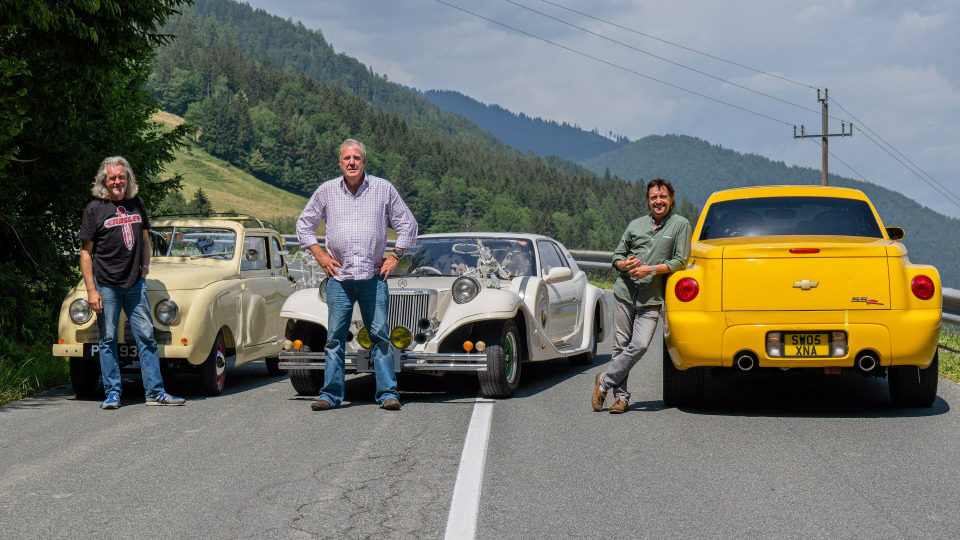
In the realm of travel, few concepts bring to mind the same sense of adventure, cultural immersion, and query as the “Grand Tour. inch топ гир it began with the 17th century, the Grand Tour was a rite of passage for young Western european aristocrats, a journey across the country to imbibe in the martial arts disciplines, history, and cultures of Europe’s most prominent cities. Over time, its scope expanded to cover destinations across the globe, growing into a symbol of intelligent curiosity and social refinement. Today, the Grand Tour continues to astound travelers worldwide, offering a tapestry of experiences that go beyond simply sightseeing. Let’s start on a journey to explore the substance and allure of the Grand Tour. The Grand Tour records its beginning to the 17th-century phenomenon of the “Grand Tourists” – young noblemen and scholars primarily hailing from The british isles, England, and other parts of Europe. Originally intended as a finishing touch to their education, the Grand Tour became a feature of cultural complexity and refinement. These travelers, equipped with ample resources and cultural capital, set out on travels that spanned a few months to many years, traveling through major Western european cities such as Paris, france, Italian capital, Venice, and Florence.
The primary objectives of the Grand Tour were beyond any doubt. Firstly, it aimed to expose the young aristocrats to the time-honored heritage of A holiday in greece and Italian capital, encouraging an appreciation for art, buildings, and philosophy. Secondly, it provided an opportunity for social networking and diplomatic destinations, allowing the travelers to forge alliances and establish their positions within Western european society. Lastly, it served as an approach of self-discovery and personal growth, challenging the travelers to navigate unfamiliar territories and cultures. Over time, the Grand Tour evolved beyond its Western european beginning, capturing destinations across the globe. The rise of colonialism and imperialism expanded the horizons of travel, with destinations such as Egypt, The indian subcontinent, and the Middle East becoming integral stops on the Grand Tour vacation plans. This expansion not only widened the travelers’ cultural views but also reinforced thoughts of Western european supremacy and exoticism. The Romantic era further romanticized the Grand Tour, depicting it as a transformative journey of self-discovery and enlightenment. Writers such as Master Byron and Percy Bysshe Shelley immortalized the Grand Tour in their works, increasing it to a symbol of freedom, adventure, and rebellion against societal norms. This romanticized perception persists to this day, influencing how modern travelers perceive and undertake their own travels.
While the traditional Grand Tour of Europe may have faded into history, its spirit lives on in contemporary travel experiences. Today, travelers from all walks of life embark on their own versions of the Grand Tour, driven by a desire to explore, learn, and grow. From backpackers traveling the ancient streets of Italian capital to luxury travelers partaking in the richness of Parisian palaces, the substance of the Grand Tour continues in myriad forms. One of the defining characteristics of the modern Grand Tour is its inclusivity. Unlike its aristocratic beginning, today’s Grand Tour is available to a diverse choice of travelers, regardless of social status or background. Backpackers, solitary travelers, families, and senior citizens alike can participate in the journey, each bringing their own views and ambitions to the table. Furthermore, the modern Grand Tour expands beyond geographical limits, capturing a wide array of experiences and activities. Cultural immersion remains a central theme, with travelers seeking to engage local communities, cuisines, and traditions. However, this is of culture has expanded to include not only time-honored art and buildings but also contemporary expressions such as street art, music fairs, and culinary movements.
Technology in addition has played a transformative role in redefining the Grand Tour experience. The advent of the internet and social media has democratized travel information, empowering travelers to plan and customize their travels with freakish ease. Virtual reality and augmented reality technologies offer immersive glimpses into faraway destinations, allowing travelers to survey their experiences and make informed decisions. The Grand Tour of the 21st century is also seen as an sustainability and responsible vacation. Increasing knowing of environmental issues and cultural maintenance has encouraged travelers to discover eco-friendly accommodations, support local artists, and engage in community-based vacation initiatives. There is a growing recognition that travel should not only enrich the individual but also contribute positively to the places visited.
Despite its enduring appeal, the Grand Tour faces a myriad of challenges in the modern era. Economic instability, geopolitical worries, and global pandemics can break up travel plans and dampen enthusiasm for query. Overtourism, supported by the popularity of iconic destinations, positions dangers to local ecosystems, structure, and cultural heritage. Moreover, issues of cultural appropriation and commodification underscore the requirement for travelers to approach their travels with awareness and respect. However, despite these challenges lie opportunities for innovation and difference. The rise of sustainable travel initiatives, community-based vacation projects, and digital nomadism demonstrates an expanding consciousness within the travel industry. By taking on principles of honourable vacation and cultural exchange, the Grand Tour can continue to survive as a transformative and enriching experience for generations to come.
In conclusion, the Grand Tour remains a powerful symbol of human curiosity, query, and cultural exchange. From its beginning as a benefit of the Western european elite to its modern incarnation as a global phenomenon, the Grand Tour continues to invigorate and astound travelers worldwide. Whether traveling the ancient damages of Athens, savoring the flavors of Marrakech, or immersing yourself in the vibrant energy of Tokyo, the substance of the Grand Tour lies not only in the destinations visited but in the transformative journey itself. Even as navigate the complexity of the 21st century, may the spirit of the Grand Tour continue to guide us towards greater understanding, empathy, and experience of the world around us.